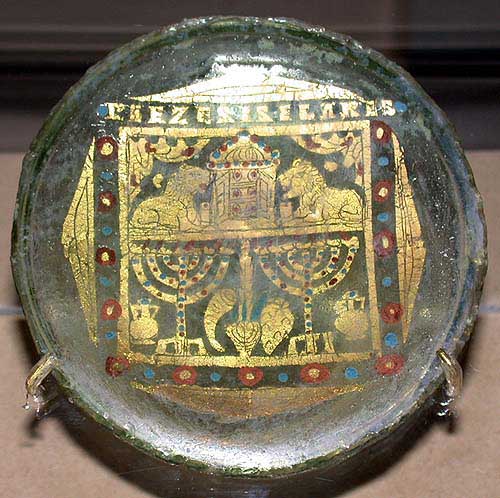 |
| Photo © The Israel Museum, by Dr. Jean-Luc Pilon, Canadian Museum of Civilization Gold glass base with Jewish symbols. Rome? 4th century CE Glass, gold leaf Israel Museum Collection, Jerusalem This is the base of a bowl or goblet, decorated with several Jewish symbols. The upper register has two lions flanking the Torah Ark of a synagogue, while the lower register shows two menorahs (7-branched candelabra which burned oil in cups at the end of each branch), a shofar (ram's horn used on special occasions in the Temple and in synagogues today), a lulav (palm fronds bound with myrtle and willow branches), an etrog (fruit of the citron tree, similar to a large lemon) and two amphorae (clay jars used to store oil and wine). The inscription reads "Drink, live, Elares". Many similar pieces have been found in the plaster walls of the Roman catacombs, probably placed there to identify the buried remains. Of the hundreds found, most have Christian motifs, biblical scenes, animals or a portrait of the deceased. Only about a dozen bear Jewish motifs-this is one of the finest of these. |
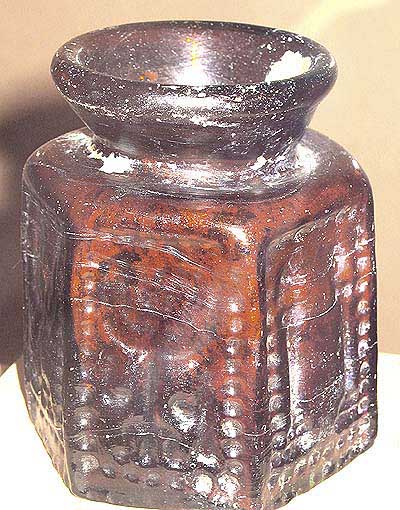 |
| Photo © The Israel Museum, by Dr. Jean-Luc Pilon, Canadian Museum of Civilization Hexagonal flask. Provenance unknown 6th-7th century CE Glass Israel Museum Collection, Jerusalem Starting in the 4th century CE, glass containers and jewellery featuring religious symbols, appeared in Syria-Palestine. There were Christian symbols, such as crosses, or Jewish symbols, such as the menorah on this flask. This type of container might have been used by pilgrims to carry water or oil from holy places. |
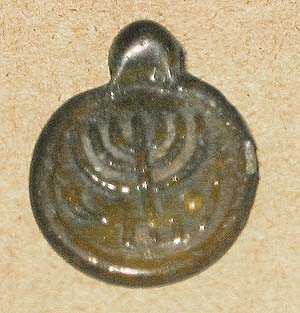 |
| Photo © The Israel Museum, by Dr. Jean-Luc Pilon, Canadian Museum of Civilization Amuletic pendant with menorah. Provenance unknown 4th-5th century CE Glass Israel Museum Collection, Jerusalem Worn as a pendant, the menorah was often thought to protect its owner and bring luck. |
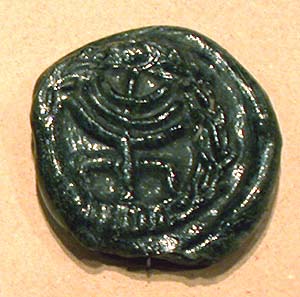 |
| Photo © The Israel Museum, by Dr. Jean-Luc Pilon, Canadian Museum of Civilization Plaque with menorah. Rome 4th-5th century CE Glass Israel Museum Collection, Jerusalem The motif impressed on this glass disk is the menorah within a wreath. This disk, probably of Egyptian origin, adorned a glass vessel. |
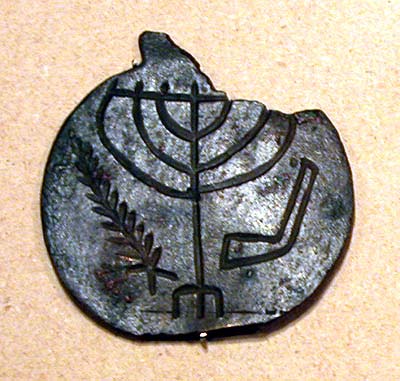 |
| Photo © The Israel Museum, by Dr. Jean-Luc Pilon, Canadian Museum of Civilization Amuletic pendant with menorah. Provenance unknown 4th-5th century CE Bronze The Reifenberg collection, Israel Museum, Jerusalem The obverse of the amulet is adorned with the menorah, a shofar and a lulav. The Greek inscription on the reverse reads: "For the welfare of lady Matrona". |
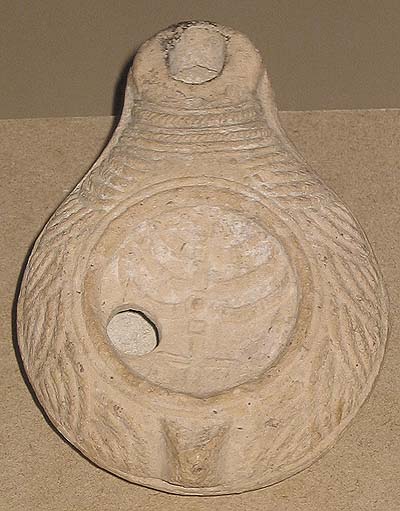 |
| Photo © The Israel Museum, by Dr. Jean-Luc Pilon, Canadian Museum of Civilization Oil lamp with menorah and shofar. Provenance unknown 3rd - 4th century CE Pottery Israel Museum Collection, Jerusalem This lamp is decorated with two Jewish motifs. The elaborate menorah has flames at the tip of its branches while the shofar is executed in a schematic style. |
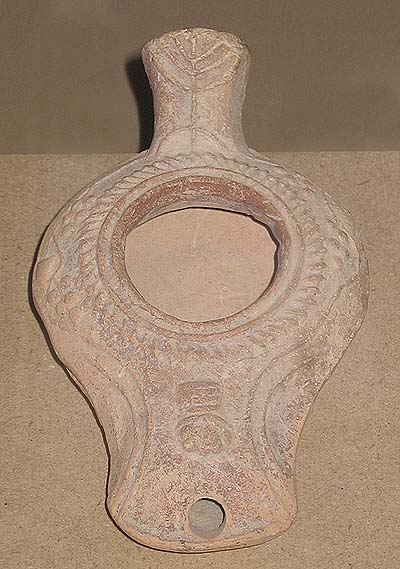 |
| Photo © The Israel Museum, by Dr. Jean-Luc Pilon, Canadian Museum of Civilization Oil lamp with menorah. Nazareth, Galilee 4th-5th century CE Pottery The Reifenberg collection, Israel Museum, Jerusalem The handle of this oil lamp is decorated with menorah. The spout is adorned with the Basket of first fruits - brought as an offering to the Temple, as the commandment in Deuteronomy 26:1-11 states: "… when thou art come into the land which the Lord thy God gives thee…thou shalt take of the first of all the fruit of the earth… and shalt put it in a basket and go to the place which the Lord thy God shall choose to put his name there…".
|